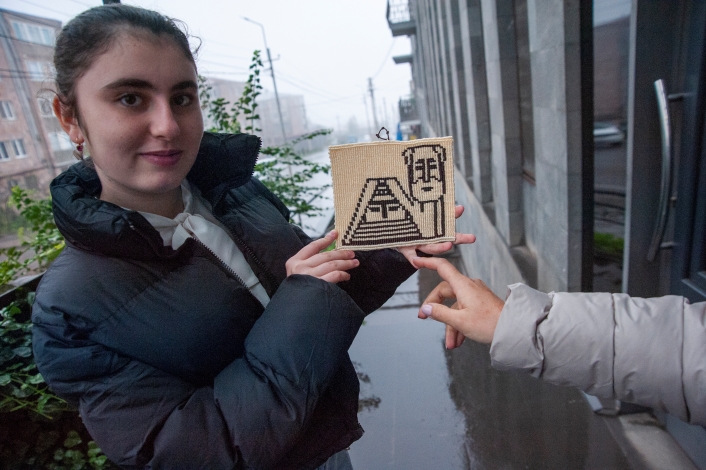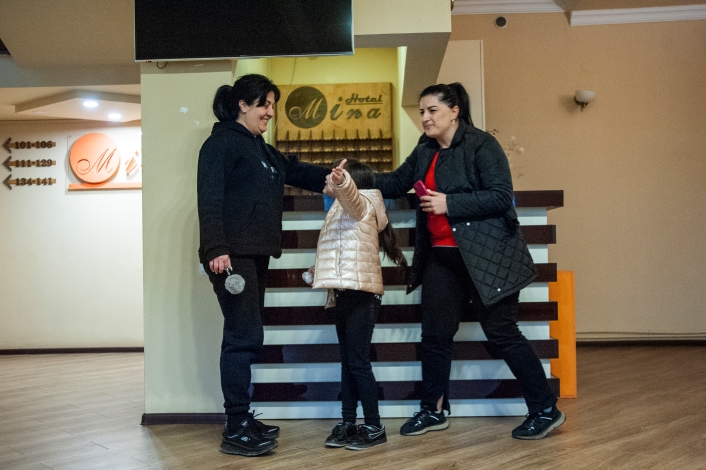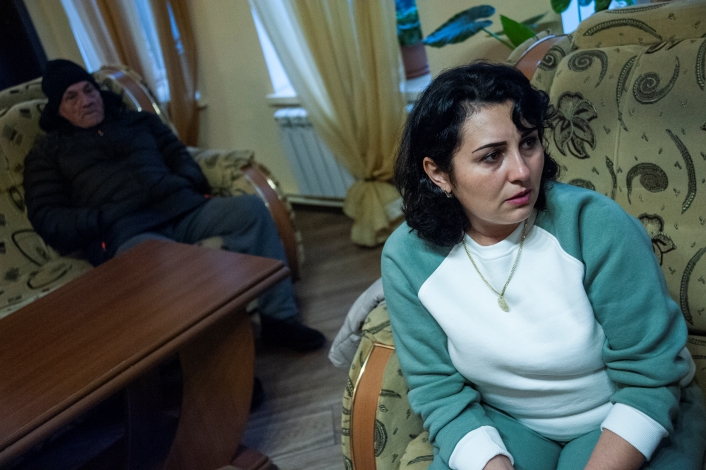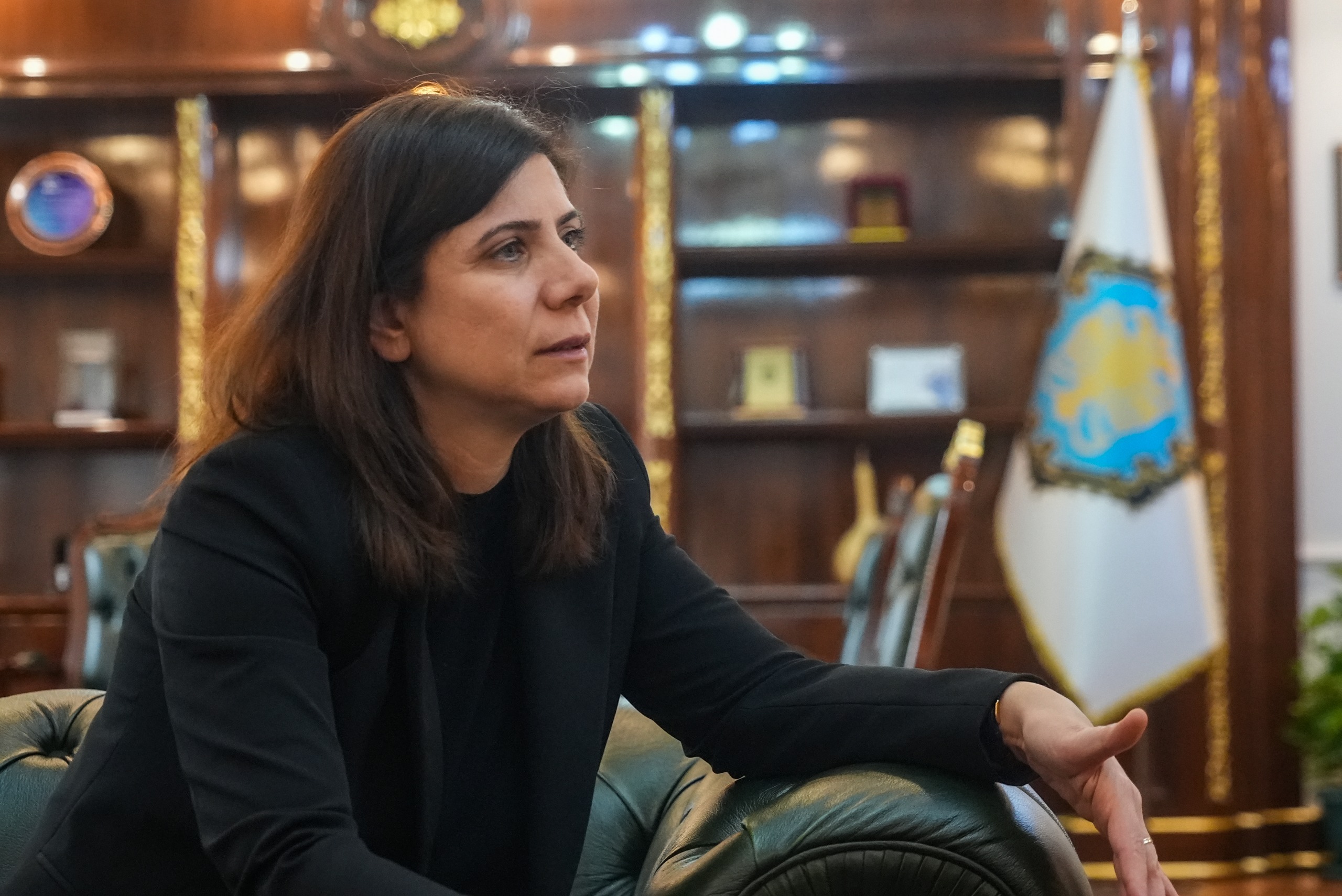On September 19, Azerbaijan launched a military operation against Nagorno-Karabakh. A ceasefire was reached on September 20 as the Nagorno-Karabakh (Republic of Artsakh) administration accepted the conditions. Right after the ceasefire, Karabakh Armenians took refuge in Armenia. After the war that followed the 9-month blockade imposed by Azerbaijan on Nagorno-Karabakh, 100 thousand ethnic Armenians had to leave their homes and took refuge in Armenia along with only a few belongings. Some of the displaced Karabakh (Artsakh) Armenians had a place to go in Armenia. However, a significant portion of them found themselves homeless and without a future. Pakrat Estukyan and Berge Arabian from Agos, travelled throughout Armenia in a one-week journalistic trip, meeting with displaced persons and non-governmental organisations. Agos will publish Estukyan's impressions and Arabian's photos as a series of articles. This week's coverage features interviews and impressions from the first day of the trip to Armenia.
As 19 September 2023 bore witness to the exodus of Karabakh Armenians from their ancestral lands, it also marked the most recent painful day in the history of the Armenian nation. On this very date, Armenian presence in Nagorno-Karabakh, dating back to more than 3 thousand years, effectively ended. In the following three days, more than 100 thousand Karabakh Armenians crossed the Hakari Bridge, taking refuge in different regions of the Republic of Armenia.
All that happened has naturally caused a great trauma both in Armenia and in the Diaspora. The loss of the Nagorno-Karabakh did also shatter many prejudices. Moreover, these prejudices have been very much based on the main premises of Armenians. In the past century, we had already experienced how pointless it was to seek refuge in the conscience of Christian states. This time, we have learned in the painfully hard way that what governs the relations between states is not historical alliances, but rather their momentary interests.
As 100 thousand Nagorno - Karabakh (Artsakh) Armenians took shelter in Armenia, one of the key considerations for our readers has been the current situation of the displaced people as well as their concerns about the future. For many of our readers, the issue has become a matter of survival of Armenia itself.
Against such a backdrop, we thought it would be meaningful to visit Armenia together with Agos' veteran photographer Berge Arabian, meet with forcibly displaced people [Karabakh Armenians], and get first-hand information from them about their current situation as well as their expectations for the future. To this end, the Friedrich-Ebert-Stiftung supported us, and helped us with the one-week journalistic trip. Prior to the trip, we had a pretty intense preparation phase to make our programme.
On the evening of October 16, we departed for Yerevan from Sabiha Gökçen Airport (in Istanbul), after a 45-minute delay due to the air traffic. Upon exiting the Zvartnots Airport in Yerevan, we met Mr. Suren, who welcomed us holding a piece of paper reading 'Agos' in his hand. Throughout our six-day trip, he drove us all around in Armenia.
What caught our attention during the flight was the diversity of passengers. In our previous flights between Istanbul and Yerevan, we would rather see traders from Armenia; however, this time majority of the passengers onboard were people from different nations.
One of the pleasant surprises was our encounter with the national boxing team of Armenia, who were returning with a bronze medal from the European boxing championship in Montenegro.
We had our first planned meeting a few hours after we landed in Yerevan, at the office of one of the prominent non-governmental organisation in Armenia. This particular organisation has been undertaking various activities in [support of] the Turkey-Armenia normalisation process, and continues its constructive collaboration with a number of civil society organisations from Turkey. However, these activities have entered a period of stagnation in the wake of the current conflict. This is also the case for [the Special Representatives of Armenia and Turkey for normalisation, respectively,] Ruben Rubinyan and Serdar Kılıç; the periodical official meetings have come to a halt.
Our photographer Berge experienced his first disappointment at this very meeting. Our interlocutors were reluctant to be photographed and to see an explicit mention of the name of their organisations. The second reservation was not so important, as I had the opportunity to convey the interview and the topics covered to the reader without mentioning any names. Yet, Berge had travelled to Armenia to photograph the things he witnessed, and if he would not be able take photographs, his work would be utterly meaningless.
Fortunately, we met a young journalist from Nagorno-Karabakh at this organisation's office, and he had no reservations about being photographed or mentioning his name.
“I don't know what exactly triggered my impulse, but I found myself in the city cemetery right after the first bombing. Pits were dug everywhere, and there were bodies waiting to be buried. At that moment I decided to leave the city. I shared this intention on Facebook, and after a while, someone I knew said there was room for one person in their vehicle, and they could take me too. The most important problem for me was finding a place to stay [in Armenia]. Although I'm not out in the cold right now, I have to find a permanent place."
Having described his situation with these words, journalist Marut Vanyan, has been providing insights to many media outlets and information channels as a freelance journalist for a while.
The next day, we headed to the south, and after a four-hour ride, we reached the city of Goris, the closest point to the Nagorno-Karabakh-Armenia border crossing.
Our first stop here was the Goris Press Club. The director of the club, Suzanna Shahnazaryan, briefly informed us about the activities of the 23-year-old organisation, and talked about their ongoing efforts to tackle the problems of the forcibly displaced Karabakh Armenians. One interesting piece of information for us was the ongoing digitisation of the newspaper Zangezur, which has been published every other day since 1934. Since its inception, the newspaper published more than 70 thousand pages. Once its fully digitised, it will serve as a crucial resource for researchers interested in the history of the region.
Displaced Karabakh Armenians who do not want to be photographed
The Goris Press Club has 12 employees. The club runs the online portal mediapoint.am, coordinated by Anna P. Anna P. accompanied us to the nearby Mina Hotel. Five displaced persons were settled in this hotel. We once again witnessed here people's sensitivity about being photographed. Just as we engaged in a conversation with someone, we found ourselves in a sudden chaos. "Vehicles arrived, get the lead out!" someone shouted, as 7-8 children got into two vehicles waiting across the street under the supervision of their mothers. We learned that they were taken to a painting course. Then someone pointed to one of those children and told us, “This seven-year-old boy got out of the car every time traffic was congested on the way out of Karabakh, he meticulously wrote the phrase 'I lived here' on the stones he found around, and then carefully placed them on the side of the road. And no one had given him such an advice by the way." 
We had similar observations in other reception centres we visited. There are significant efforts to ensure [uninterrupted] education of school-age children. Despite the many grievances experienced, there is no one left hungry or homeless. Psychologists and education specialists do their best to help people based on their knowledge and experience. While each of those coming from Nagorno-Karabakh (Artsakh) was trying to cope with their own unique problems, they had two things in common. The first was the issue of provision of permanent housing, and the second was the gratitude towards the state [the government of Armenia] for its mobilisation and efforts to provide services. The government's decision to provide monthly subsistence payment of 50 thousand Drams (125 US Dollars) to each incoming refugee as well as three meals per day was appreciated by everyone.
Needless to say, the most crucial issue after the housing problem is finding a job. “I packed my family into the car and came here [to Armenia], but I had to leave my tractor there [in Nagorno-Karabakh],” said a farmer. Some of them came with their house keys in their pockets, while some others did not even lock the door of their house so that no one would force and break the door in vain. There were also those who piled everything that could possibly be used in their house in front of the door and set it on fire. At that very moment, I remembered the words of the old man who tried to repair the broken threshing board before his deportation in 1915, as narrated by Hrant Dink: "Son, we have planted the fields, the ears of grain have grown, of course someone will come and reap it, it is not appropriate to leave the threshing board broken."
Once we were done with our return journey and arrived at the hotel, we already surpassed the 12-hour working time we had envisaged for the day by two hours.
Next day, we would be headed to the city of Artashat, which was closer to Yerevan as compared to Goris. So, we decided to set off one hour later than our first day. Apart from our schedule for the journalistic trip, we had to find some time to visit our friends from Armenia as well.
In the first two days of our trip, we were able to get in touch with forcibly exiled Karabakh Armenians through non-governmental organisations in Armenia. Our third meeting would take place in a public institution, at the premises of Artashat Municipality.
(To be continued)
(Translation: Burcu Becermen)





